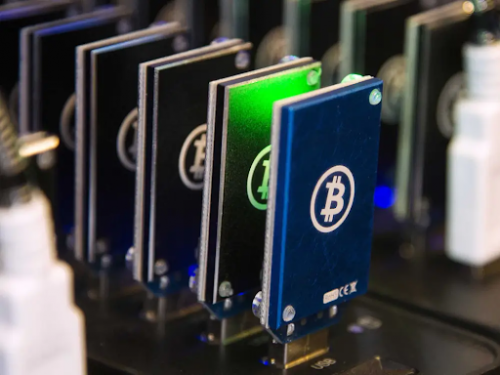
Bitcoin mining is the method through which new bitcoins enter circulation. It is also the method through which the network verifies new transactions, and is essential to the maintenance and growth of the blockchain ledger. Utilizing advanced machinery that solves an exceedingly complicated computational arithmetic problem, “mining” is carried out. The procedure is repeated with the first computer to solve the puzzle, receiving the next block of bitcoins.
Mining for cryptocurrency is hard, expensive, and rarely pays off. As a result of the fact that miners are rewarded with crypto tokens for their efforts, mining is attractive to numerous cryptocurrency investors. This may be due to the fact that enterprising types, like California gold prospectors in 1849, saw mining as a path to riches. And why not if you are technologically inclined?
The bitcoin reward miners earn is an incentive to participate in the core function of mining: verifying and monitoring bitcoin transactions to ensure they are authentic. Bitcoin is a “decentralized” cryptocurrency that does not depend on a central authority such as a central bank or government to oversee its regulation, as these tasks are shared by many people around the world.
However, if you want to sell BTC to debit card, read this article to find out if mining is really for you.
Why Does Bitcoin Require Miners?
Blockchain “mining” is network nodes’ computational effort to obtain fresh tokens. Miners are paid as auditors. Validate Bitcoin transactions. Satoshi Nakamoto created this standard to keep Bitcoin users honest. Miners avoid “double-spending” by verifying transactions.
When a Bitcoin owner double-spends, they do it without permission. When you give a $20 bill to buy vodka, you no longer own it, therefore you can’t use it to buy lottery tickets next door. False money is as possible, but it’s not the same as spending the same dollar. Investopedia says a digital money holder might manufacture a clone and give it to a merchant while retaining the original.
Consider a genuine and a fake $20 banknote. If you tried to spend both real and counterfeit dollars, someone who compared their serial numbers would discover they were similar, suggesting one was fake. Blockchain miners review transactions to guarantee users haven’t double-spent bitcoin.
What You Need for Bitcoin Mining
Early in Bitcoin’s history, anybody could compete for blocks using a home computer. Because Bitcoin mining difficulty changes.
Bitcoin network plans to issue a block every 10 minutes to process and verify transactions. 1 million mining rigs will certainly address the hash issue faster than 10 rigs. Bitcoin’s mining difficulty is adjusted every 2,016 blocks, or two weeks.
Bitcoin mining difficulty climbs as processing power increases to maintain a steady block creation rate. Less computing power reduces the difficulty. A single Bitcoin miner on the present network will likely find nothing.
Mining equipment
To mine competitively, miners must now invest in costly computer equipment, such as a GPU or an ASIC (ASIC). These cost $500-$10,000. Some miners, particularly Ethereum miners, buy individual graphics cards to cobble together mining operations.
Most Bitcoin mining equipment nowadays consists of ASIC processors, which mine bitcoins. When new ASIC chips are created and installed every few months, they enhance hashing power and energy efficiency. Miners can create 200 TH/s while utilizing 27.5 J per terahash. If you don’t want to invest into your own mineer, you can also check out a bitcoin mining pool.
Do not think about where to put your bitcoins, send them to a trastra card to save and increase.
Interesting Related Article: “What is Crypto Copy Trading?“
